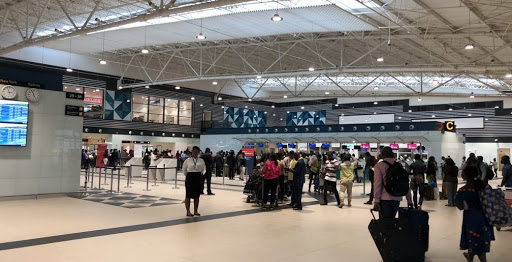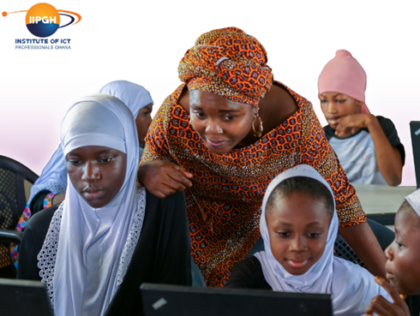Summary
The COVID-19 pandemic has led to the shutting of borders in most countries across the world, in a bid to slow the spread of the virus. This has seriously impacted all economies globally. Several countries, including Ghana, have instituted a mandatory 14-day quarantine/isolation for repatriated citizens and residents.
This piece uses Ghana as an archetype of West African countries and provides a template for easing inbound travel restrictions. It puts forward a proven technology (IoT-based) solution, based on science to effectively enforce and monitor adherence to self-quarantine policies.
Savvy Labs Africa, based in Accra, Ghana currently offers this solution and is ready to deploy for Ghana or any interested countries or corporate/industrial organizations.
The Problems
1. The current random (human-based) process for tracking and enforcing mandatory quarantine/isolation is sporadic, ineffective, and costly, with no comprehensive, cost-effective means of scaling the process to allow for the re-opening of borders. People are simply strongly advised to self-quarantine.
There is growing evidence of persons increasingly breaking or disregarding these rules across the entire social divide, especially with the limited mechanism for tracking them. This is jeopardizing efforts to slow the spread of the virus while putting several lives at risk!
2. Furthermore, unlike several developed countries, repatriated persons in most West African nations are camped in designated facilities and are required to bear the cost of their mandatory quarantine. For instance, in Ghana, repatriates pay for their own food and accommodation to the tune of US$1,100 on average, up to about US$2,000 in some cases (excluding Airfare and other associated travel costs.) West African governments simply cannot afford to look after quarantines.
This draconian approach is simply prohibitive for several travelers, and would certainly discourage inbound travel when borders finally re-open. Simply put it is not scalable and not sustainable.
3. There is pressure on the current designated quarantine facilities, with hotels and schools being converted into temporary quarantine centers, in some cases. This is simply not scalable, especially when looking to re-open borders to enable movement of persons which is necessary for economic recovery.
4. Above all, there is overwhelming pressure to re-open borders due to the impact of closed borders on individuals, businesses, and Africa’s economy as a whole. Ghana’s tourism and hospitality industry, for instance, has reportedly suffered a staggering US$171 million loss as a result of the COVID-19 pandemic — and this is only for the period of March to June 2020.
The significant gains made through the well-acclaimed “Year of Return” campaign that was climaxed in 2019, are sharply being eroded by this pandemic.
Impact of COVID-19 on Ghana’s Economy
According to the Ghana Health Service, Ghana has recorded over 40,000 positive COVID-19 cases as of 7th August 2020, with an approximate 0.5% mortality rate. The country has suffered a reported US$2.4 billion revenue deficit, with the estimated GDP growth plummeting from 6.8% to 0.9% for the Financial Year 2020. Notable among the worst-hit sectors is the Tourism & Hospitality industry, which has reportedly incurred losses to the tune of circa US $171 Million. Clearly, these are difficult times.
Decisive science-based measures must be implemented to prevent a loss in momentum of foreign tourism and investment, while simultaneously preventing the further importation and spread of the virus (and potentially new/unknown strains). It is worth noting that 48% of all 2019 aviation passenger arrivals in Ghana, were from other African countries, most of which are nowhere near their peak, with a common theme of inadequate testing. Thus travel within the African continent poses a massive risk.
This is the conundrum we face, knowing very well that ‘when people move, the virus moves.’
THE SOLUTION: Enhanced Monitoring & Adherence Tracking
The proposed solution is to deploy a complete adherence management system that enforces compliance of individuals in self-quarantine irrespective of location, via real-time geo-tracking. Thus ‘eligible users’ can self-quarantine from their various preferred locations, subject to approval by the relevant authorities. This solution is thus referred to as the ‘Enhanced Monitoring & Adherence Tracking (EMAT) solution.
An innovative1 self-quarantine management system that helps countries to combat the spread of COVID-19 by effectively enforcing & monitoring compliance2 with safe & Smarter safe, smarter self-quarantine policies3.
EMAT Features

Enhanced Monitoring & Adherence Tracking (EMAT) – Solution Components
- It uses a combination of mobile, geo-tracking and tamper-proof wearable technology to enable people to quarantine themselves
- It enables Real-time visibility of users’ time-based location vis-à-vis their home or designated quarantine location, with alerts and reports generated for various breaches or violation.
- It allows eligible target groups to start or continue their quarantine/self-isolation from their homes or alternate locations in a secure, low-risk, and cost-effective manner.
Note: This solution has been successfully battle-tested on the frontlines of the COVID-19 crisis, in places like Hong-Kong, which effectively kept its borders open throughout this pandemic.
How it Works

Enhanced Monitoring & Adherence Tracking Solution — User Flow*
The user is first issued with a tag/wristband (see video below) that pairs with a mobile application on the user’s phone. The tag communicates constantly with the mobile app via Bluetooth low-energy (BLE) technology, and it only records changes in distance, rather than the user’s pinpoint location within the home/quarantine premises.
Upon arrival at home / designated location, the user declares /starts or continues their quarantine via the mobile app, and the monitoring begins from that moment until the Mandatory period is complete.
[A short explainer video is available at https://bit.ly/EMATvideo ]
The system generates real-time alerts whenever users breach their individual boundaries, attempt to tamper with the tags or fail to respond to period presence check-in messages. This then triggers the application of consequential measures such as fines, which would to a large extend, deter many persons from breaching their quarantine rules.
The centralized monitoring capabilities and analytical reports help to generate actionable insights to inform policies, decisions, and strategies to effectively combat the coronavirus pandemic.
Re-Opening Borders in West Africa — What’s Our Best Strategy?
Apart from Hong-Kong, other nations such as Kuwait and Bahrain have signed up to this solution, with about 26 other countries worldwide considering this solution. A private enterprise (construction company) in Singapore, as well as the Toronto Wolfpack Rugby team in Toronto, Canada, have signed up for an adapted version of this solution.
How do we make this solution real and practical for West Africa, and not simply ‘copy blindly’?
To re-open borders within West Africa (and subsequently the entire continent), a sensible, low-risk approach would be to pilot this quarantine adherence tracking solution in a phased manner. It may be prudent, to begin with, a low-risk target audience, such as inbound travelers who are currently kept in government-designated quarantine facilities who meet the following criteria:
- Initially tested negative for the COVID-19,
- Remain asymptomatic for a specified number of days (based on current scientific models)**
Such relatively lower-risk** persons can be discharged from the mass quarantine centres and made to continue their mandatory quarantine at their homes (or other satisfactory location) with their tags being (pre-)activated upon reaching their destination. This represents significant cost savings (over 30% in many cases) for the travelers while ensuring their real-time monitoring.
This also frees up capacity in the government-designated quarantine centres, ensures higher utilization, and reduces the impact of incidental outbreaks within those facilities. Let’s not forget the crucial insights to be generated upon data analysis.
Target Audience
The primary targets for the pilot phase of this solution are Inbound Travelers with an expected long/extended stay, such as the following:
- Returning Ghanaians
- International Students
- Embassy / Consulate Workers
- Trade Missions & Delegations
- Donor Agency / Aid workers
- Multinational Company Foreign staff & Consultants
- Retirees & Deportees
- “Year of Return” settlers/investors & newly-conferred citizens
- Volunteers / ‘Year-abroad’ workers
- Airline Flight crew (Short but Frequent stays)
- Spouses & Families of Foreign residents
- Others (E.g. Religious Leaders, Sports persons)
After a successful pilot, persons who even test positive but remain asymptomatic or exhibit very mild symptoms may be afforded the opportunity to also continue their mandatory quarantine at home, if it is deemed safe to do so, after a slightly longer initial period of quarantine in the government-designated centres**
There would always be the option to deploy the tags/wristbands from the first day (Day 1) of quarantine, when travelers are kept in the hotels/quarantined facilities, through till the last day. This implies deploying the EMAT solution for the complete quarantine duration.
Over time, the solution can be extended to secondary targets such as in-country essential/front-line workers including airport staff, healthcare professionals, first responders, and law enforcement operatives who continue to bear a relatively higher risk to coronavirus exposure on a daily/frequent basis, in their line of duty. Some of these persons are listed below:
- Airport Staff
- Immigration Officers
- Customs Officers
- Doctors / Nurses
- Other Allied Healthcare professionals
- Security / Law enforcement agents
- Other Emergency Services E.g. Fire Service, NADMO
- Testers / Contact Tracing Teams
- Other At-risk Public officers
- Spouses & Families of Essential Workers
EMAT currently is the most scalable way of enforcing a mass quarantine regime for both travelers and essential/ frontline workers, and our best bet yet for safely re-opening borders.
Savvy Labs Africa, based in Accra, Ghana, currently offers this solution and is ready to deploy for Ghana’s COVID-19 situation, any interested countries or enterprise organizations.
The use cases are simply endless, extending to commercial industries and enterprises such as Mining, Oil & Gas, Construction, Manufacturing, Sports, etc. and private establishments.
What use cases can you think of? Share your opinions with us.
Full article available at https://bit.ly/EMATCovid19
info@savvylabsafrica.com
https://www.savvylabsafrica.com/
Author: Joseph Sam is an ex-GE, ex-Ericsson, ex-IBM, global award-winning digital innovator, design-thinking practitioner and an SDGs advocate. He is passionate about enabling Africa’s digital economy using cutting-edge technology such as A.I., Blockchain, and IoT. He is a member of the World Economic Forum’s Global Shaper Community and a member of the Institute of IT Professionals, Ghana (IIPGH). Joseph is the Founder & CEO of CogniConsult Ltd., an AI-focused social enterprise and boutique innovation consultancy. He is also the CEO of SavvyLabs Africa, an IoT-focused startup that currently offers the Enhanced Monitoring & Adherence Tracking (EMAT) Solution.
For comments, contact info@savvylabsafrica.com
BIBLIOGRAPHY
[*Image courtesy WisiIica]
[**This is based on the science and new evidence (epidemiological modeling) available on COVID-19 at present, which suggests that infectiousness likely peaks near to the onset of symptoms, and falls rapidly over the course of a week thereafter. In essence, viral shedding typically reduces to levels below the infectious threshold after the 8th day of infection.]
Samuel Clifford, Billy J Quilty, Timothy W Russell, Yang Liu, Yung. -Wai Desmond Chan, Carl A B Pearson, Rosalind M Eggo, Akira Endo, CMMID COVID-19 Working Group, Stefan Flasche, W John Edmunds. Strategies to reduce the risk of SARS-CoV-2 re-introduction from international travelers. medRxiv 2020 July 24.
Wölfel R, Corman VM, Guggemos W, Seilmaier M, Zange S, Müller MA, et al. Virological assessment of hospitalized patients with COVID-2019. Nature. 2020 May 28;581(7809):465–9.
He X, Lau EHY, Wu P, Deng X, Wang J, Hao X, et al. Temporal dynamics in viral shedding and transmissibility of COVID-19. Nat Med. 2020 May 1;26(5):672–5.
Yen MY, Schwartz J, King CC, Lee CM, Hsueh PR. Recommendations for protecting against and mitigating the COVID-19 pandemic in long-term care facilities. Vol. 53, Journal of Microbiology, Immunology and Infection. Elsevier Ltd; 2020. p. 447–53.
Additional Links:
a. EMAT Full Article on Medium
b. EMAT Video on YouTube
c. SavvyLabs Africa
https://www.savvylabsafrica.com/
d. Author’s Profile





